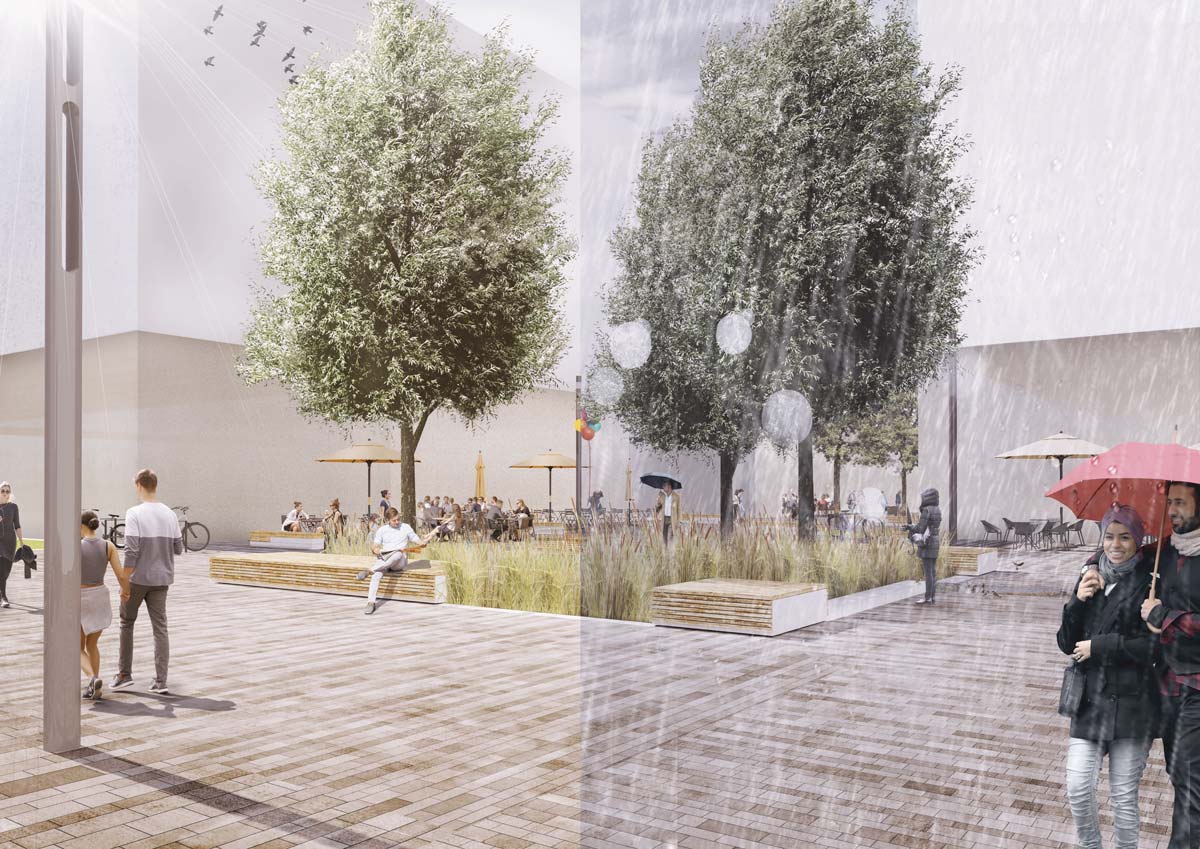Water use
The sponge city principle
Our cities need to adapt to climate change right now. Schumacher Quartier shows how this is done. And how water can also be conserved the same way.
Weather phenomena such as heavy rains or extreme heat are increasing. Wherever streets are asphalted and land is built on water cannot find natural run-off routes. Drainage systems are pushed to their limits with increasing frequency during heavy rains and they then overflow. And on hot summer days the air in the cities is unbearable. What can we do?
Schumacher Quartier is finding new ways. The residential buildings and open spaces on the site of the decommissioned Tegel Airport are planned on the basis of the sponge city model. The Quartier is becoming Berlin’s project of reference for climate-adapted and water-sensitive urban development.
Every drop counts
A sponge city holds back rainwater in the residential area. Green facades and roofs as well as street and space design support the microclimate and are an integral component in the planning of the Quartier as a sponge city. Integrated evaporation and seepage areas take in precipitation like a sponge and send most of it back into the environment through evaporation. At the same time the groundwater is enriched through seepage. The rainwater remains part of the natural cycle, which saves resources. The humid green areas contribute towards cooling the urban area during hot spells, and when it rains heavily they regulate the drainage.
Downloads on the topic
The sponge city principle
Comprehensive information on the “sponge city principle” in the Schumacher Quarter.

